Editor’s Staff
The Once Exotic Plants of Miami
It happens when we see and hear about unusual weather events in reports on television, and when we read about climate change in our newspaper. It happens again when we leave our air-conditioned home on hot summer days and complain about the high temperatures. What happens is that we unknowingly join one of two streams of thinking. There are those who think Climate Change is junk science and there are the crusaders who nag about pending doom. The one undeniable fact about climate; it is changing.
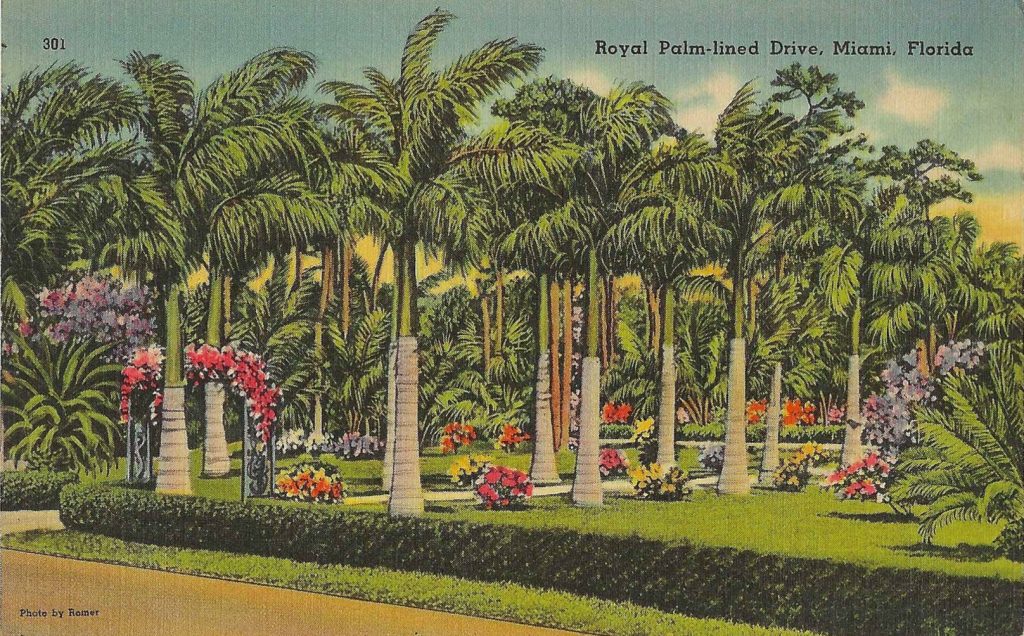
One place in America where the effects of climate change has become painfully evident is Miami, Florida. None of what will appear in the following paragraphs is based on factual research; every statement comes from simple observation and the cooperation of two old and dear friends who have lived and worked in Miami since the late 1960s and are now retired and enjoying life as octogenarians.
Just over a year ago a padded envelope arrived at Postcard History; it contained nine postcards. There was no note, but we knew who sent them and a brief inspection proved that a good history of south Florida vegetation could be illustrated with these cards. A few ideas were mulled over and over but nothing with a clear concept developed. Nevertheless, within a week the cards were scanned and emailed to my friends, Ben and Freddie (Benjamin and Fredricka the dear friends mentioned above) for their input.

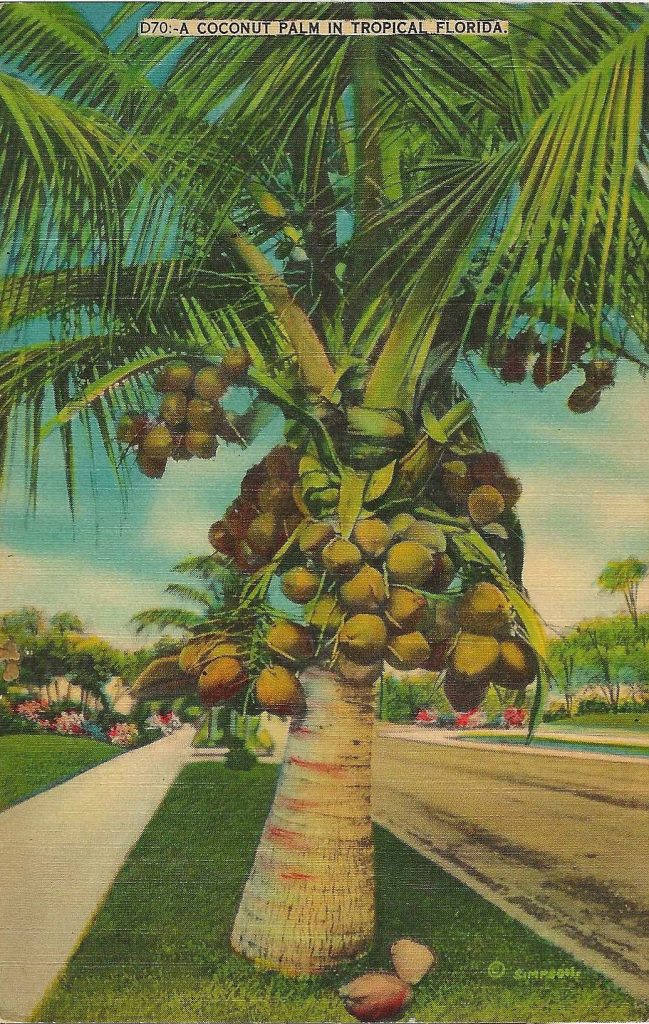
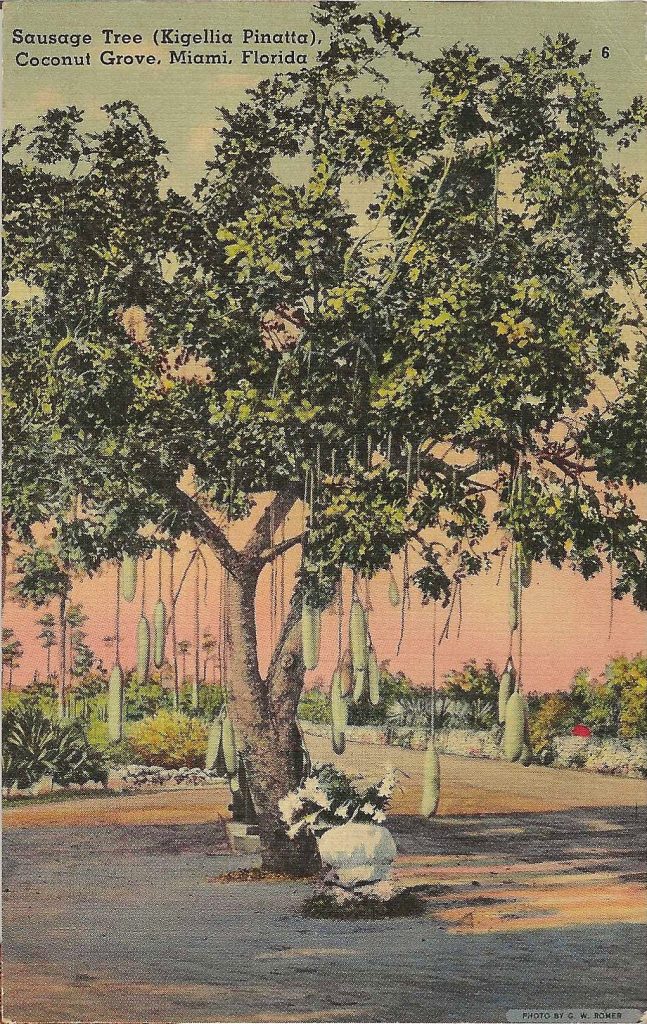
Weeks went by and sometime around August, I called Ben and asked if he had an idea about the cards. His answer was positive, but it was not, in any stretch of one’s imagination, what I wanted to hear.
The details were: Ben looked at the cards and shared the images with Freddie. She suggested that they drive around south Florida on what Ben called a mini-vacation, to find examples of the trees and plants on the cards. They wanted to do what some people would call a “neighborhood inventory.” They started out the following week and drove in ever-expanding circles around Miami looking for sausage trees, Alamanda, purple Bougainvillea, and traveler’s trees. Three days later they ended the day of searching only twelve miles from home, so that’s where they spent the night.
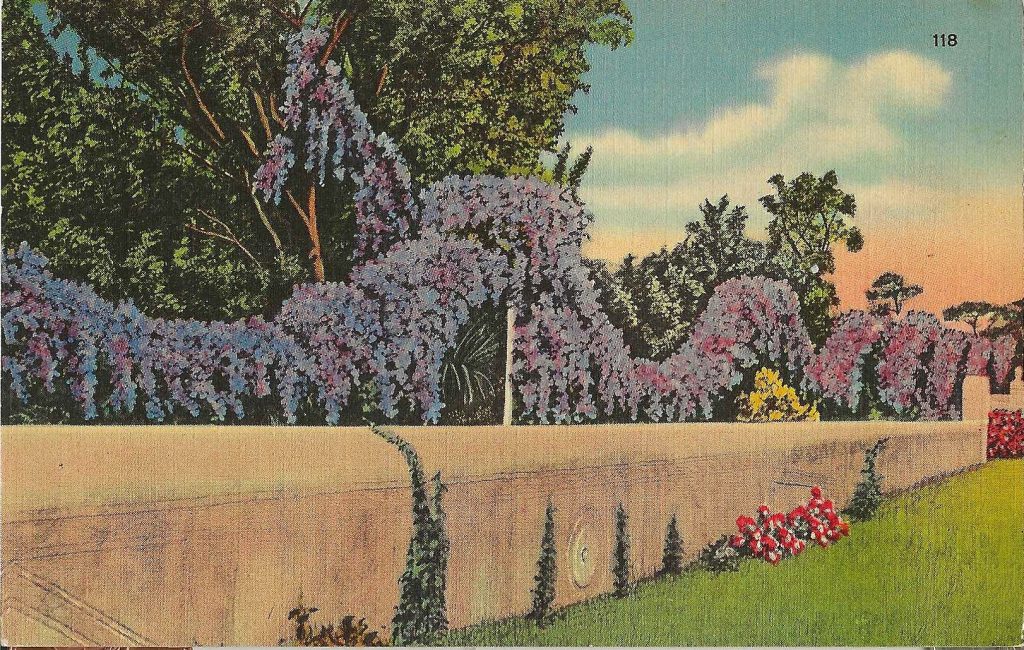

The next week, they tried again. Same result. A third attempt took them nearly forty miles outside the city. The third time was a charm, but again, Ben said, if I had to put it in a poker analogy, everyone else folded and I won with a pair of deuces!
At that point, they quit.
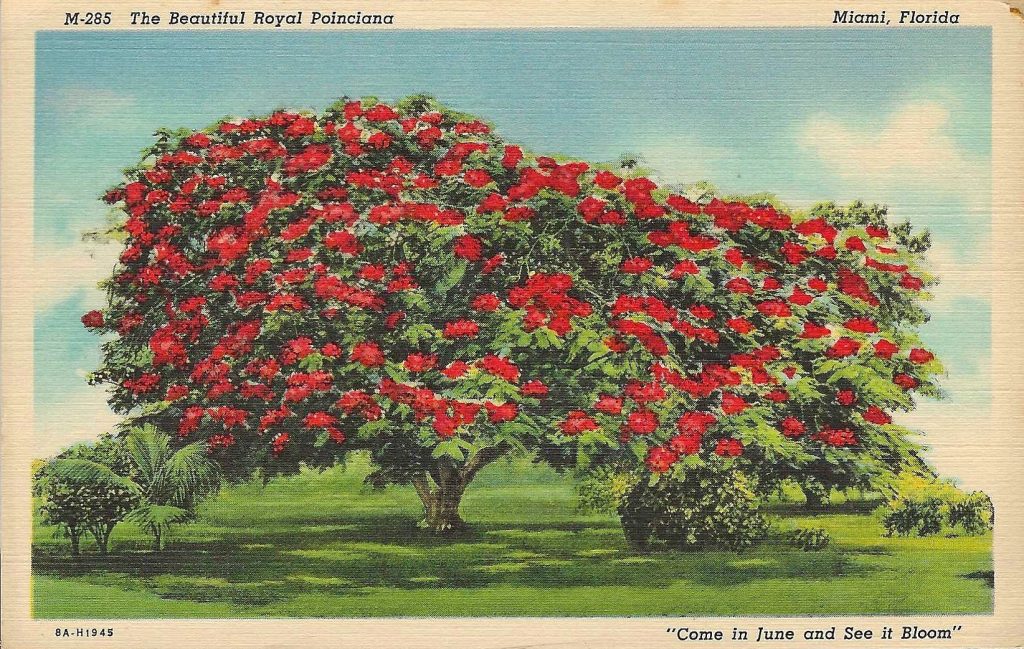
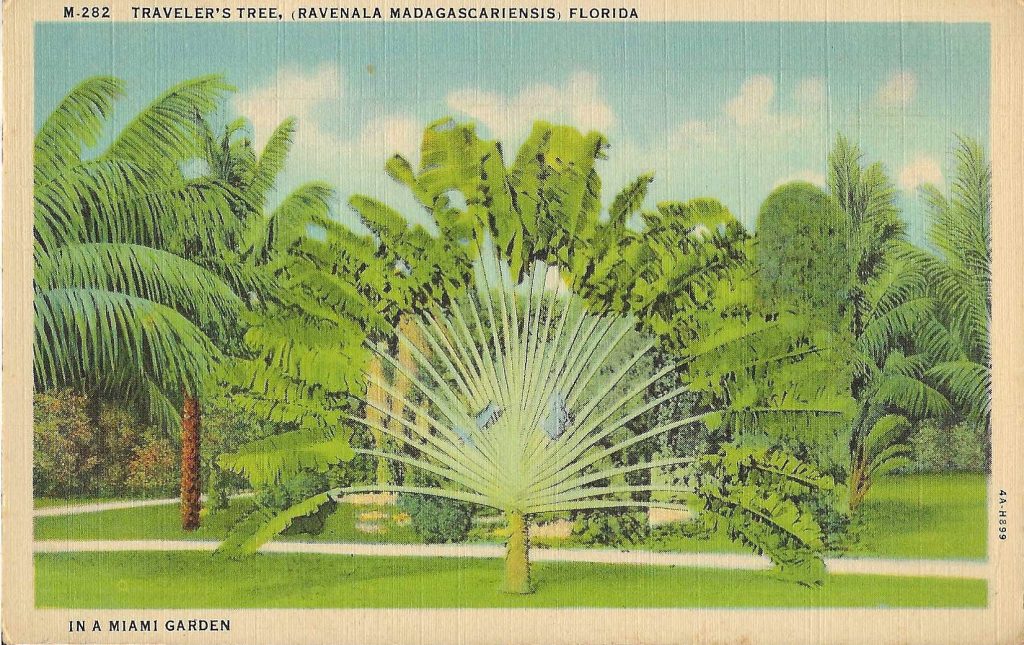
The final score was: Royal Palm trees, still plentiful. Coconut Palm trees, many; Sausage trees, none. Purple Bougainvillea, none; Alamanda, two small vines in the front yard of a doctor’s office in North Miami; and one Golden Shower tree in Hialeah and a second in Coral Gables. Ben said he found a Poinciana tree in Hallandale Beach, but Freddie chimed in and contradicted him, saying it was not blooming so it was hard to tell-for-sure.
No traveler’s trees were found. They covered 211 miles.
***
It has been suggested that by 2055 Miami will be underwater because of rising sea levels. They may need to construct sea-barriers similar to the ones in Europe to stop the inundation. What they can do about the exotic plants going extinct at the astonishing pace as they have in the last five or six decades when they were the pictorial subject of probably millions of linen-era postcards is anyone’s guess.
I have several linens similar (and in some cases probably identical) to these, but they’re in storage, so I can’t easily access them right now.